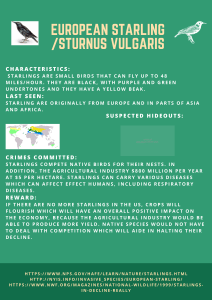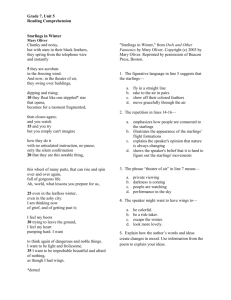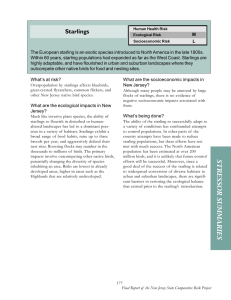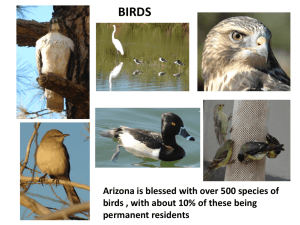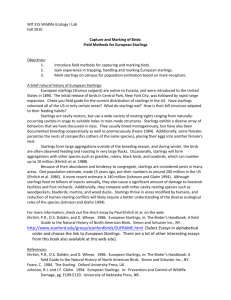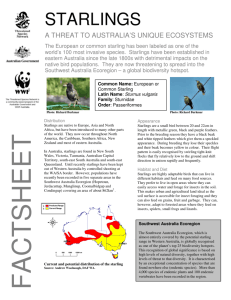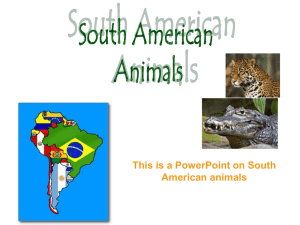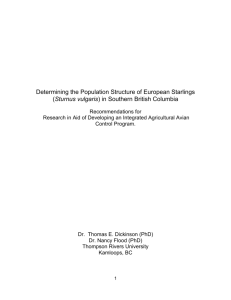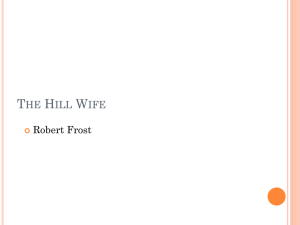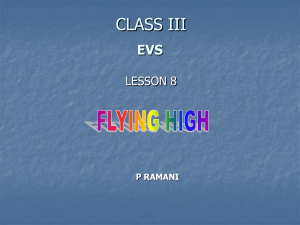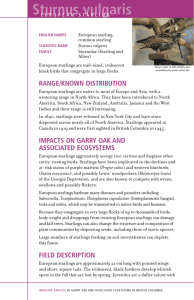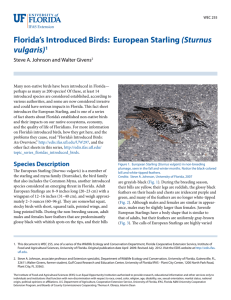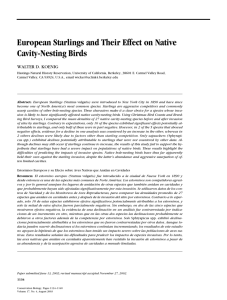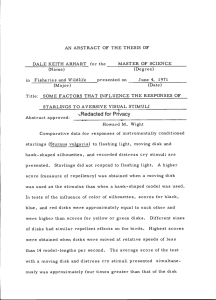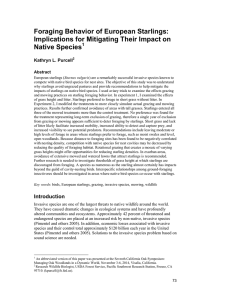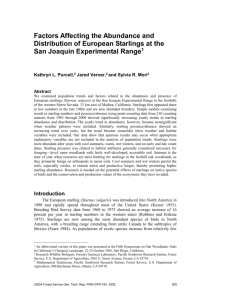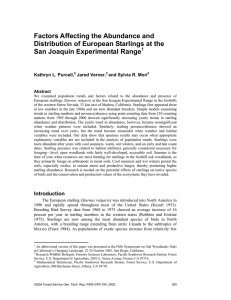“Starlings on George Square” Textual Analysis answers
advertisement
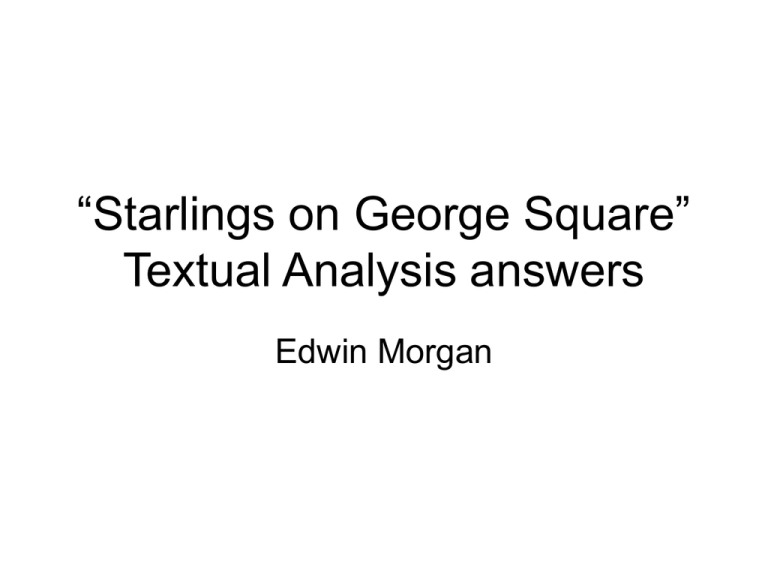
“Starlings on George Square” Textual Analysis answers Edwin Morgan Hello Duke of Edinburgh Chaps. • I trust you have returned smelly, exhausted and happy. And will blisters the size of coconuts. You will, of course, be refreshed for your NAB on Friday. Hurray! • I have put up the answers for the first stanza of the poem. The rest of the class will be going over stanzas 2 and 3 in group work. There are model answers for word choice, imagery, sentence structure, tone and alliteration. Don’t be intimidated: these aren’t the only answers and you won’t get everything I’ve put down. Hope it helps. Lines 1-23 • Tone – wonder, amazement, excitement. • It’s evening as the sun is setting. “The stonefields” are the high buildings round George Square. • The words “sundown” and “high stonefields” suggest a Western film. The word “sundown” is not a word we would normally say but might hear in a Western and the High stonefields suggest the high chaparral and thick, tangled brushwood. • Look at next slide. Not exactly like George Square but still… Lines 1-23 • “The darkening roofscape stirs – thick- alive with starlings” Just as the roofs of the building against the skyline in George Square appear solid and dark in the setting sun, so the mass of starlings resting on the rooftops is so thick and packed together that they seem to be part of the building. When they move, it seems as if it is the building that is moving . Lines 1-23 • “like a shower of arrows they cross” • Just as the hail of arrows we might see in a Western moves swiftly and threatening, so the starlings move together at great speed, “threatening” the people in George Square, as if the starlings are attacking. Moreover, arrows are small and dark, which also reminds us of the small, dark birds. • This continues the Western imagery introduced in Line 1. “they bead the wire with jet” • Just as jewels on a necklace are close together, and there can be many of them, so the birds are are regularly and closely spaced on the wires above George Square. The idea of something attractive and valuable is implied in the idea of a piece of jewlery and the poet’s appreciation of the birds is continued when he describes the birds as “jet”. Just as “jet” is a shiny, black stone of some value, so the poet thinks that the birds are also beautiful and valuable. “They nestle, preening by the lamps and shine, sidling by the lamps and sing, shining, they stir.” • The words “nestle, preening and sidling” are all very precise words which suggest the movements of birds. The word “nestle” suggests that the birds are very comfortable where they are and are happily making a home there. It also suggests they are content to be packed closely together. The word “preen” suggests a bird cleaning itself and perhaps showing off for the citizens below. The word “sidling” suggests the delicate, silent, careful, movement of the birds on the wires above the square. “They nestle, preening by the lamps and shine, sidling by the lamps and sing, shining, they stir.” • Verbs are placed in a pattern beside the present participle (-ing words; they can make us think of movement that is happening now. Think about Dulce “guttering, choking, drowning”.) Each line is a verb, followed by a present participle. This creates a pattern in the lines which reflects the pattern of the birds movement as they fly together above the Square. By focussing on the movement of the birds, we are reminded of how graceful and remarkable the movement of starlings can be as they fly together. • The repetition of “by the lamps” reminds us of just how many birds there are, as we are told twice that they are around the lamps which surround the Square. “Homeward hurrying crowds” line 11 ”Wide eyed at the clamour on those cliffs” line 14 • “The alliteration of “homeward hurrying” seems to draw the two words together, as the people on George Square draw together against the starlings. The people are coming together against a common enemy. • The alliteration of “clamour” and “cliffs” makes the starlings sound like a single mass. The hard “c” sound emphasises that the birds are being described in terms of the noise they make at this point, rather than the way they look. The word “cliffs” takes us back to the stonefields that are mentioned in the first line.
